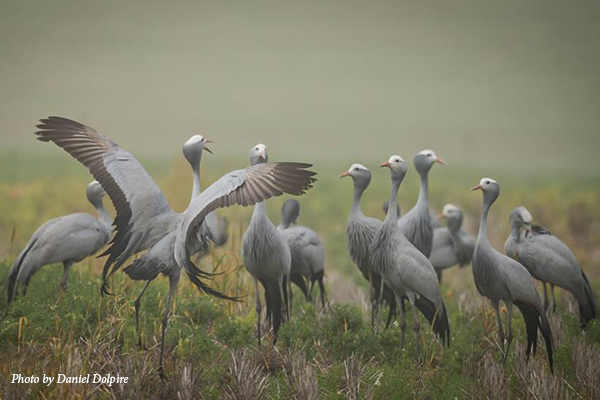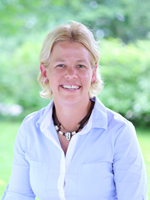
The Western Cape of South Africa is home to more than half of the world’s population of Vulnerable Blue Cranes. It is, therefore, a priority to ensure that we effectively protect this population. We also need to understand, where possible, what the future may look like for Blue Cranes in the region, given the changes in the landscape driven by various economic and climatic factors.
This past month, we fitted the last seven satellite trackers to adult Blue Cranes in the Overberg region of the Western Cape. This adds to the six trackers that were fitted onto other cranes a year ago. Collectively, they will form part of a Master of Science and a Ph.D. research study. This year, we are excited to have University of Cape Town Master of Science student Sydney Davis join us to do her Conservation Biology thesis on Blue Cranes. She is using the tracking data to determine Blue Crane seasonal movements in the Overberg, describe roost sites used by Blue Cranes in the Western Cape and determine home ranges of breeding Blue Cranes in the region. Data and research outputs will enable us to provide informed and objective input into development and conservation planning in the Overberg, ensuring that the Blue Crane’s ecological requirements are considered.

Each bird caught was fitted with a GPS/GSM solar powered tracker on its back using a backpack mounting design. In addition, they were also fitted with a unique combination of color rings on their legs to allow for identification of individuals from a distance. Each evening, we receive two hourly locations from each bird to get a location of their roost site.
Sydney will be in the Overberg over the coming months collecting field observation data of each bird that will be used to supplement the tracking data.
Why do we capture and band the cranes in winter, which is July and August in South Africa? We catch the birds when they congregate in wintering flocks, made up of breeding and non-breeding birds. In the Overberg, these flocks regularly feed at livestock feeding troughs during winter when farmers provide supplemental feed to their sheep. These feeding sites become the ideal “bait stations” and enable us to catch birds using lines of foot noose traps placed around the feeding stations. All these captures are approved by the local government conservation agency.
This project is made possible through the kind and generous support of the Leiden Conservation Foundation. We were thrilled to have Tom and Kathy Leiden joining us in the field to assist with the captures.
For more information on this project, please feel free to contact me on tanyas@ewt.org.za or tanya@savingcranes.org.
 Story submitted by Tanya Smith, Southern African Regional Manager for the International Crane Foundation/Endangered Wildlife Trust Partnership. Click here to learn more about our work in Sub-Saharan Africa.
Story submitted by Tanya Smith, Southern African Regional Manager for the International Crane Foundation/Endangered Wildlife Trust Partnership. Click here to learn more about our work in Sub-Saharan Africa.
